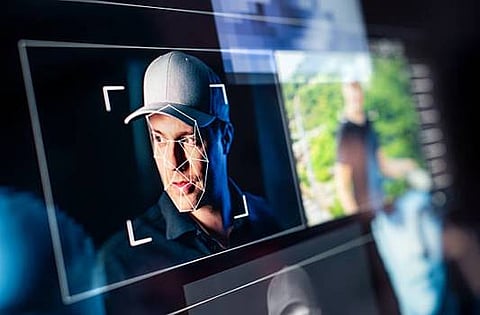

Artificial intelligence is reshaping the way we edit and enhance images. By 2025, AI-powered tools are faster, smarter, and more intuitive than ever, making it possible for anyone—from professional photographers to content creators—to achieve results that once required hours of manual effort. With platforms like Evoto at the forefront, editing is no longer just about efficiency. It’s about expanding creative possibilities while keeping workflows simple and scalable.
Let’s explore the trends that are defining the next era of AI image editing.
The days of “auto-correct” filters are behind us. Today’s AI photo editing tools don’t just adjust brightness or sharpen an image blindly; they understand what’s inside a frame. A modern auto-enhancement tool can balance exposure across a sunset while preserving the glow on a subject’s face, or brighten foliage without washing out the sky.
This context-aware approach means AI can treat each part of an image differently. A portrait, for example, can be improved by subtly lifting skin tones and adjusting facial expressions, while the background receives its own tailored treatment. For photographers who work in volume—like wedding shooters or social media teams—the combination of speed and consistency is invaluable.
As smartphones become the camera of choice for casual and semi-professional photographers, mobile-first editing is quickly becoming the norm. By 2025, AI-powered editors are capable of delivering real-time feedback: adjust lighting as you shoot, preview portrait touch-ups instantly, or test out background blurs before saving the image.
This immediacy is paired with touch-optimized interfaces that feel natural and fast. Instead of struggling with sliders or layers, creators can achieve pro-level results with a few taps. For influencers and brands that rely on speed, mobile editing is no longer a compromise—it’s the standard.
Background removal has traditionally been one of the most tedious editing tasks, especially when hair strands, glass reflections, or semi-transparent fabrics are involved. Modern AI tools have made this nearly effortless. They can separate a subject with pixel-level precision and replace or refine backgrounds without leaving harsh edges.
But 2025 goes further than simple cutouts. Generative AI can suggest entire scenes that match the tone of the photo, or create props, shadows, and textures that seamlessly blend with the original. In industries like e-commerce and fashion, where consistent branding is crucial, this opens up an entirely new level of creative freedom—without the cost of reshoots.
Generative Fill has become one of the most exciting innovations in editing. With it, users can remove distractions, extend image boundaries, or replace parts of a photo with AI-generated details that look like they were always there. In parallel, AI upscaling has matured to the point where low-resolution images can be converted into crisp, high-definition visuals free of noise and distortion.
What makes these tools especially powerful in 2025 is harmonization. Instead of pasting elements into a photo, AI now automatically matches lighting, shadows, and perspective. A replaced sky doesn’t just “fit”—it feels like it was captured in the same shot. For photographers restoring old photos or designers repurposing assets, this level of coherence is transformative.
AI-driven retouching has moved away from the overly polished, “plastic skin” look that plagued early editing apps. The new standard is natural enhancement—subtly softening wrinkles, brightening eyes, and evening out tones while preserving the subject’s individuality.
Restoration has also become accessible to everyone. Damaged prints, faded colors, and even black-and-white images can be revived with remarkable accuracy. With non-destructive workflows, creators can experiment freely, knowing the original file remains untouched. This balance of precision and authenticity is especially valued by professionals who want edits to look invisible yet impactful.
Editing is no longer confined to flat, two-dimensional adjustments. Tools are beginning to incorporate 3D object manipulation, realistic light simulation, and AR-powered previews. Imagine testing how a product photo would look under different lighting setups, or applying interactive overlays that respond to movement.
At the same time, cinematic color grading—once the domain of video editors—is now being applied to still photography. AI can analyze the mood of an image and suggest film-inspired palettes, from bold teal-and-orange contrasts to soft pastel washes. These stylized looks give everyday images a striking, cinematic quality that resonates across digital platforms.
One of the most useful trends emerging in 2025 is predictive editing. Instead of starting every project from scratch, AI tools learn from your past preferences and suggest adjustments before you even make them. They might recommend your favorite crop ratios, a color palette you often use, or a retouching style that fits your portfolio.
For professionals managing large workloads, this level of personalization translates into significant time savings. More importantly, it ensures that every project maintains a consistent visual identity—something increasingly vital for brands and creators building long-term recognition.
With great power comes responsibility. As AI editing becomes more advanced, questions of authenticity and manipulation have come to the forefront. In 2025, content credentials—digital watermarks that log an image’s edits and origin—are being built into major editing platforms. This helps distinguish between original photos and AI-generated content, protecting trust in an era of deepfakes and misinformation.
AI developers are also making efforts to reduce bias by training on more diverse datasets and implementing safeguards against misuse. For photographers, journalists, and brands, embracing transparency will be as important as embracing innovation.
AI is redefining what’s possible in image editing, and 2025 marks a turning point. From context-aware auto-enhancements to generative design, predictive workflows, and ethical transparency, the tools we now have at our disposal are more powerful and more accessible than ever.
At Evoto, the goal is simple: empower creators to work faster, smarter, and with greater creative freedom. Whether you’re restoring family photos, managing product catalogs, or shaping a brand’s visual identity, staying ahead of these AI trends will give you an edge—and unlock new ways to tell your story through images.
